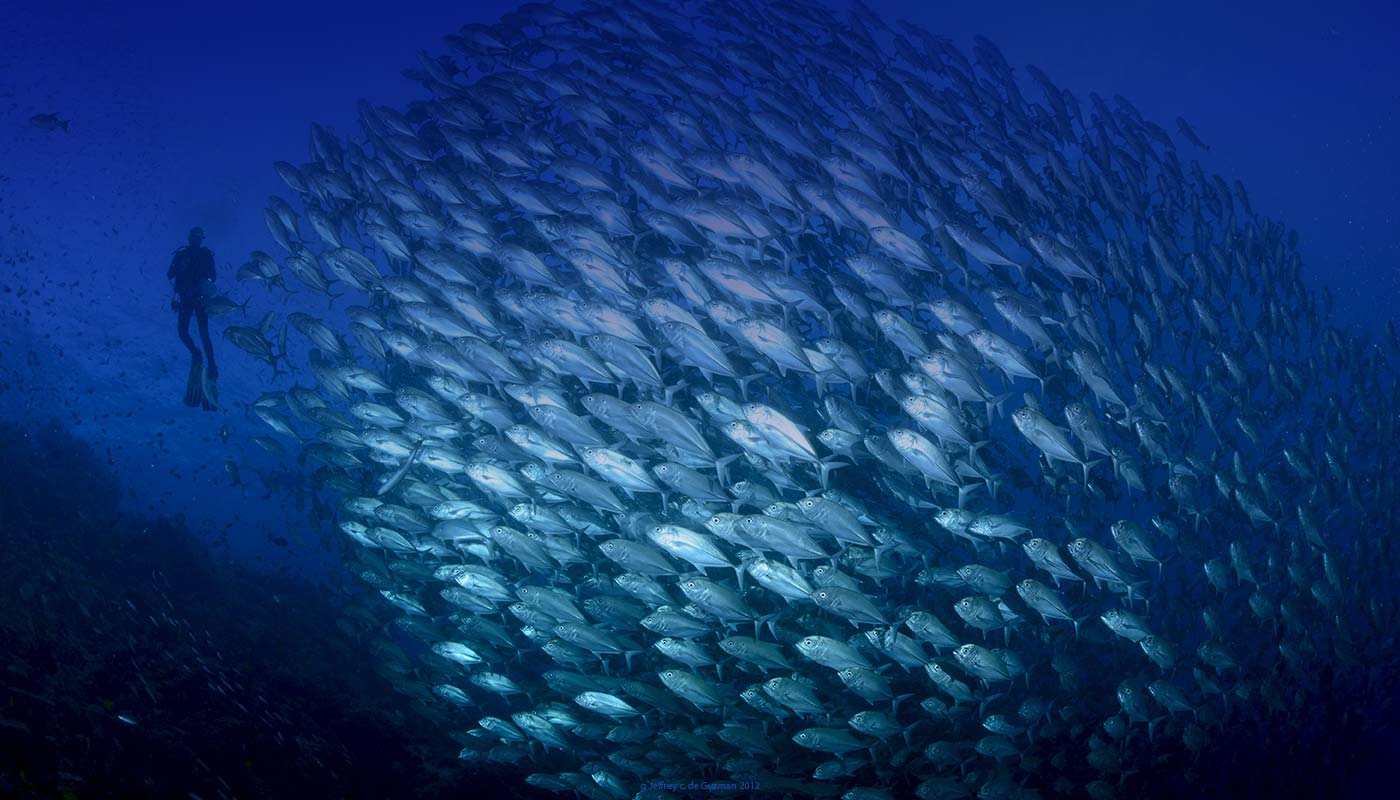We have already talked about Philippines earlier “Explore Philippines on a liveaboard diving trip”. So now it’s time to have a closer look at diving destinations this amazing country has to offer. Do we all remember that it’s really diverse? So here is you guide to help you to choose your perfect itinerary in Philippines.
Tubbataha Reef
Time to go: March to June

Tubbataha Reef is an atoll coral reef located in the Sulu Sea. The entire Tubbataha Reef consists of two atolls that each have a small islet protruding from the water. Between the two atolls there is an 8-km/5-mi wide channel with a flourishing, diverse ecosystem.
This dive destination has become extremely popular because of the coral “walls” where you can observe the shallow coral reef abruptly giving way to great depths. Tubbataha Reef provides a wonderful habitat for unique fauna and diverse colonies of fish. Here you can find hammerhead sharks, manta rays, giant jacks, barracudas, as well as parrotfish, Moorish idols, and moray eels in the sanctuary. The checklist of Tubbataha’s inhabitants should include the hawksbill sea turtle, which is an endangered species. The reef has dive sites of all levels and complexity, allowing divers of any certification level to find something extraordinary here. For instance, the South Atoll with its Lighthouse has gentle dives, while the Delsan Wreck dive site is frequently called a heaven for macro photographers. North Atoll is suitable for more experienced divers, and many sharks and manta rays are along for most dives. The best spot for photography at Tubbataha Reef is Malayan, with numerous crabs, shrimp, nudibranchs, and reef sharks. Due to the weather conditions in the Sulu Sea, diving at Tubbataha is strictly seasonal and lasts from March to June. The destination is only available on a liveaboard.
Visayan Islands
Time to go: November to May

The Visayas are the Philippines’ central region of tropical islands. The Visayas are famous for beautiful beaches, a relaxed lifestyle, and visually striking dive sites. There are six main islands, namely Panay, Negros, Cebu, Bohol, Leyte, and Samar. Panay Island is a famous wall diving spot with a depth of 3-30 m (10-98 ft). Negros also has wall diving, but is famous for dive sites with large fish on Apo Island. Cebu’s dive sites are very different and adventurous. If you love turtles or have been dreaming of seeing them, then go to Dolphin House or Tuble Point. Another famous spot here is Moalboal, which is a well-known home for large pelagics and schools of fish. Oslob, which is on the opposite side of Cebu, gives unique access to the spot where locals feed whale sharks! And of course Malapascua and its thresher sharks are on the far northern point of Cebu. Bohol Island’s main attraction is the pelagic fish and reef sharks that are frequently seen here.
Malapascua Island
Time to go: December to April

Malapascua Island is one of the best scuba diving locations in all of Southeast Asia. Here divers can find wrecks, sandy muck dives for photography with models, amazing coral walls, tunnels, and lots of fauna. This dive spot is mostly known for its thresher shark dives and manta rays.
This location is the best choice for shark lovers. Tunnels near Gato Island offer unique opportunities to see numerous whitetip sharks on the sandy bottom. The cleaning station on Monad Shoal is one of the few places in the world where you can almost always find thresher sharks, and hammerhead sharks are present at Kemod Shoal (a sunken island) from December to May.
Coron Bay
Time to go: November to May

Coron Bay is famous for being one of the best wreck diving spots in the whole world. To this point, 12 WWII Japanese ships have been discovered here. Most wrecks have remained untouched and are well preserved. A couple of them can be visited by divers with open-water certifications, while others require advanced knowledge and experience.
Local guides say that because most of the sunken ships here are huge (up to 160 m/525 ft long), it is advisable to make a couple of dives at the same site to see and discover the entire ship. Make sure to note that this spot is only for wreck lovers, because there isn’t much marine life around the ships, and the visibility in these places is pretty low (5-15 m/16-50 ft).
How useful was this post?
Click on a star to rate it!
Average rating 5 / 5. Vote count: 1